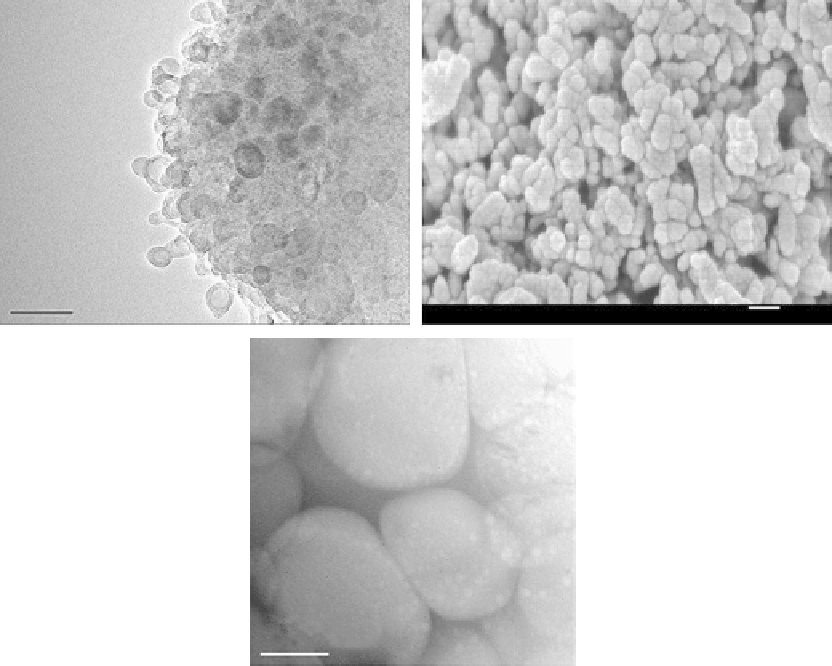Biomedical Engineering Reference
In-Depth Information
(a)
(b)
50 nm
SEI 5.0 kV ×90,000 100 nm WD 6 mm
(c)
200 nm
FIGURE 4.11
TEM and FESEM pictures of the HA splats. (a) TEM photo showing the predominant presence of the nanosized
grains (~30 nm) at fringes of the splat, (b) FESEM picture taken from the surface of the splat showing consistent
nanosized grains, (c) TEM photo showing the enlarged grains at the unmelted part within the HVOF splat.
(From Li, H., Khor, K.A.,
Surf. Coat. Technol.
, 201, 2147-2154, 2006.)
HA coatings can be achieved through the control of the melt state of HA particle in the
HVOF flame. It was evidenced that the molten part of the HA contributed to refined nano-
structures, while the unmelted part accounts for enlarged mcrosized grains (Li et al. 2006).
Investigation on melt-state of the particles is important toward understanding the micro-
structure of HA coatings. Since it is difficult to accurately determine the melt state of HA
from microstructure analysis of bulk coating, examination made on individual sprayed
HA particles and splats has been successful.
Thermal-sprayed coating is composed of liquid droplets that rapidly solidified upon
impact. It is likely that some droplets will contain entrapped gases attained during
their in-flight stage. Furthermore, it is well known that thermal sprayed coating shows
a layered structure, which is a splat-accumulated structure. Apart from the influence of
residual stresses, which is generated during coating formation, properties of the bulk coat-
ing are essentially derived from the characteristics of the solidified splats (Tadnno et al.
1997; Brown et al. 1994; Brown and Turner 1998). Therefore, the study on the properties of
sprayed particles and splats are essentially important.

Search WWH ::

Custom Search